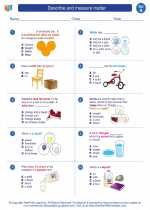Feedback Mechanisms
Feedback mechanisms are processes in living organisms that maintain homeostasis, the stable internal environment necessary for survival. There are two main types of feedback mechanisms: positive feedback and negative feedback.
Negative Feedback
Negative feedback is a mechanism in which the body's response to a stimulus works to counteract the original stimulus, maintaining a stable internal environment. For example, when body temperature rises, negative feedback mechanisms work to lower it back to the normal range. This is achieved through processes such as sweating and vasodilation.
Positive Feedback
Positive feedback, on the other hand, amplifies the body's response to a stimulus. This type of feedback is less common in biological systems and is often associated with processes that need to be rapidly completed. An example of positive feedback is the process of blood clotting. When a blood vessel is damaged, platelets release chemicals that lead to further platelet activation and the formation of a blood clot, which helps to stop the bleeding.
Study Guide
- Define feedback mechanisms and explain their importance in living organisms.
- Differentiate between negative and positive feedback mechanisms, giving examples of each.
- Discuss the role of feedback mechanisms in maintaining homeostasis.
- Explain the importance of feedback mechanisms in the human body, focusing on specific examples such as temperature regulation and blood sugar levels.
- Compare and contrast negative and positive feedback mechanisms, highlighting their similarities and differences.
Understanding feedback mechanisms is essential for comprehending how living organisms maintain internal stability and respond to changes in their environment. Mastery of this topic will provide a solid foundation for further studies in biology and related fields.
.◂Science Worksheets and Study Guides First Grade. Describe and measure matter

 Worksheet/Answer key
Worksheet/Answer key
 Worksheet/Answer key
Worksheet/Answer key
 Worksheet/Answer key
Worksheet/Answer key
 Vocabulary/Answer key
Vocabulary/Answer key
 Vocabulary/Answer key
Vocabulary/Answer key
